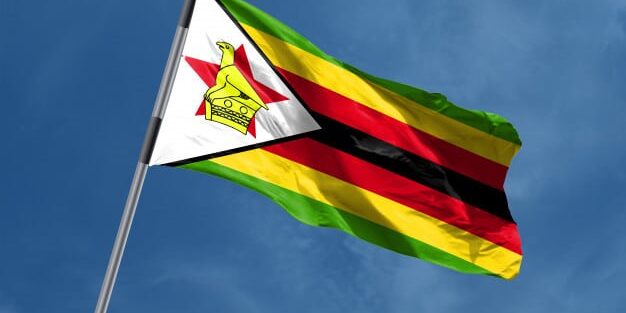
New Zimbabwe Gold Coins: A Solution To Inflation?
EDITOR'S NOTE: Inflation has long been a concern for economies worldwide, with Zimbabwe battling one of the highest inflation rates globally. One solution that seems to be gaining traction in Zimbabwe is the introduction of gold coins. These coins, called Mosi-oa-Tunya, offer a unique way to counteract the nation's spiraling inflation and stabilize its currency. By providing a store of value that serves as an alternative to the U.S. dollar, gold coins are helping to mitigate the impact of inflation and restore some degree of economic stability. While this approach may not suit all economies, Zimbabwe's experience offers valuable insights into how gold coins can potentially address inflationary challenges.
It may not necessarily work in other economies, but in Zimbabwe it appears specie coins are helping to bring inflation under control.
According to a recent statement made by Reserve Bank of Zimbabwe Governor John Mangudya, Zimbabwe’s recently released Mosi-oa-Tunya gold coins “have proved to be an effective open market instrument for mopping up excess liquidity in the economy.”
Mosi-oa-Tunya translates to Smoke that Thunders and is a reference to Victoria Falls. The obverse of each coin depicts Zimbabwe’s heraldry, with the falls appearing on the reverse. The weight and purity of the coin appears under the heraldry.
Each coin has a serial number and can be purchased using domestic Zimbabwe dollars, U.S. dollars, or many other exchangeable foreign currencies. The coins are priced based on the international spot price of gold plus modest production costs. The coins can be traded, converted into local currency, used in commerce, or pledged as security against loans.
The objective of issuing gold coins for circulation rather than issuing them to be marketed to collectors or speculators is to lower domestic demand for U.S. dollars. Zimbabwe has been battling the highest inflation in the world. The annual pace of Zimbabwe’s inflation was estimated to be at 255 percent in November 2022. The RBZ began selling gold coins during the summer of 2022, the plan being to slow inflation by providing a store of value for the nation’s currency while giving consumers an alternative to the U.S. dollar.
The Mosi-oa-Tunya gold coins have a 180-day vesting period. To date it appears the specie coinage has helped stabilizing inflation and the local currency’s exchange rate versus the U.S. dollar.
Zimstats is Zimbabwe’s domestic statistics office. According to Zimstats, month-on-month inflation deflated from 30.74 percent in June 2022 to 1.1 percent in January. The parallel market premium declined for almost 100 percent in July 2022 to under 50 percent by Dec. 19, 2022.
The initial issue of the Mosi-oa-Tunya was in one troy ounce form, with a fineness of 0.9167 purity. In November Mangudya announced additional denominations were to be released in denominations of half, quarter, and tenth ounce. In recent history Zimbabwe’s fiat currency has been issued in bank note denominations of Z$5, Z$10, Z$20, and Z$50. Zimbabwean bond notes or RTGS dollars denominated in U.S. dollars have circulated alongside eight other currencies but have been unable to be used outside Zimbabwe. Fuel ration coupons of questionable origin and that are widely counterfeited have also circulated in denominations of 1, 5, 10, 20, 25, and 50 liters. These liters represent liters of diesel fuel, gasoline, or kerosene.
Bond coins struck at the South African Mint in Pretoria have been available since 2016 and were officially part of the most recent currency series as of 2019. These coins are issued in denominations of 1, 5, 10, 25, and 50 cents bond and 1- and 2-dollars bond.
Alongside all this fiat and specie money Zimbabwe has adopted the U.S. dollar as legal tender for a five-year period in an effort to stabilize domestic exchange rates. A shortage of dollars has made this arrangement problematic.
Relative to the geographic size of Zimbabwe the African nation has the second largest gold deposits in the world. It has been estimated about 60 percent of this gold is mined by the artisanal mining sector. Officially all gold is to be sold to the gold monopoly Fidelity Printers and Refinery controlled by the RBZ.
According to a 2022 Center for Natural Resource Governance report, “Gold dealers, who are protected by the ruling Zanu-PF party official’s use state apparatus to capture and control gold-rich areas throughout the country… buyers remit a bare minimum to FPR to justify the continued renewal of the license.”
The introduction of circulating gold coins was meant to give incentives to gold miners to produce above state-planned targets. Those miners who exceed their targets can receive 80 percent of their payment for additional output in more stable foreign currencies.
Not everyone is in favor of specie gold coins being used by Zimbabwe. On January 18 the Bloomberg news reporting agency quoted an International Monetary Fund spokesman as saying, “The sale of gold coins has contributed to withdrawing Zimbabwe dollar liquidity from the market, though it represents an opportunity cost in terms of foregone reserves for the Reserve Bank of Zimbabwe.”
At the time of the introduction of the gold coins Labor and Economic Development Research Institute of Zimbabwe Senior Researcher and Economist Prosper Chitambara pointed out, “Most people may not have money to buy this since most citizens are literally living from hand to mouth.”
Originally published by: Richard Giedroyc on Numismatic News











